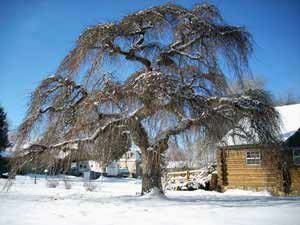Durango Field Office – Community Forestry
We provide technical assistance to local communities through our Community Forestry Program. Our staff help organize local tree boards, conduct tree inventories, assess insect and disease problems, and prepare community forestry management plans.
People often choose community trees for their beauty and ability to provide shade. Trees benefit communities by providing urban forests that many times include social attachment to individual trees. They also improve air quality, control erosion, moderate the sun’s effects and attract wildlife.
Proper tree selection is important when replacing or adding trees to your urban forest. A tree’s shape, characteristics, growth rate and size at maturity should be considered when choosing a location for it.
The following publications provide useful information about tree selection, planting and care:
Durango Tree Guide (5.5 MB PDF)
Tree, Shrub & Perennial Selection and Care Guide (Durango) (5.7 MB PDF)
City Certified Arborists and Tree Care Information (Durango) (3.7 MB PDF)
A Cortez Guide to Selection, Planting, Care – Trees & Shrubs (1.7 MB PDF)
Colorado Tree Coalition

The mission of the Colorado Tree Coalition (CTC) is to lead statewide efforts to preserve, renew and enhance community forests in Colorado. This mission is accomplished through the efforts of dedicated volunteers who work on committees in the following areas: tree grants, the Champion Tree Program, Communitree Awards, Notable Trees of Colorado Calendar, Colorado Tree Trust, National Arbor Day Poster Contest and the development of various publications. For more information, please visit the Colorado Tree Coalition® website.
The State Champion Camperdown elm is located in Mancos. The Durango area also is home to the State Champion mountain alder, Douglas fir, white fir, Gambel oak, southwestern white pine, ponderosa pine and blue spruce. The National Register of Big Trees can be found on the American Forests website.
Each year, the CTC administers grants funded by the USDA Forest Service and the Colorado State Forest Service through the Urban and Community Forestry Assistance Act. The grants are only for tree-related projects and community forestry promotional activities. An educational component should be included in each project. Projects that enhance good community tree planting, care or maintenance, are eligible. In general, projects must be on public property; however, projects on private property that provide public benefit and access also are acceptable.
In 2010, grant dollars will be divided into four tiers (Management/Maintenance, Media, Tree Planting, and Xcel Utility). For more information, visit the Colorado Tree Coalition® website, select Programs and then CTC Grant Program.

National Arbor Day Foundation
The National Arbor Day Foundation (NADF) encourages tree planting and environmental stewardship through educational programs.
Two NADF programs that the Durango Field Office is quite involved with are Tree City USA and Arbor Day celebrations.
Several local communities are certified under the Tree City USA program. Congratulations to Cortez, Durango and Mancos! Fort Lewis College is also a Tree Campus USA-certified community.
Four requirements must be met to receive this honor:
- A tree board or department
- A tree care ordinance
- A community forestry program with an annual budget
of at least $2 per capita - An Arbor Day observance and proclamation
For the last 17 years, Durango also has earned a Tree City Growth Award. This means the city is above and beyond the community’s level of tree care in one of four categories: education and public relations, partnerships, planning and management or tree planting and maintenance.

